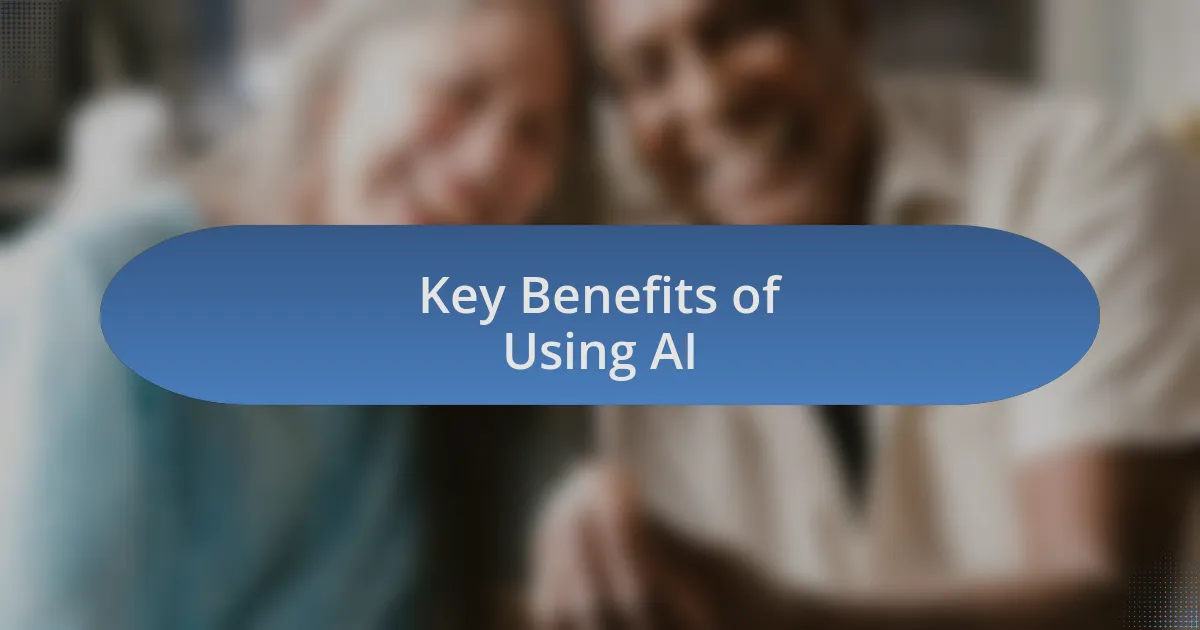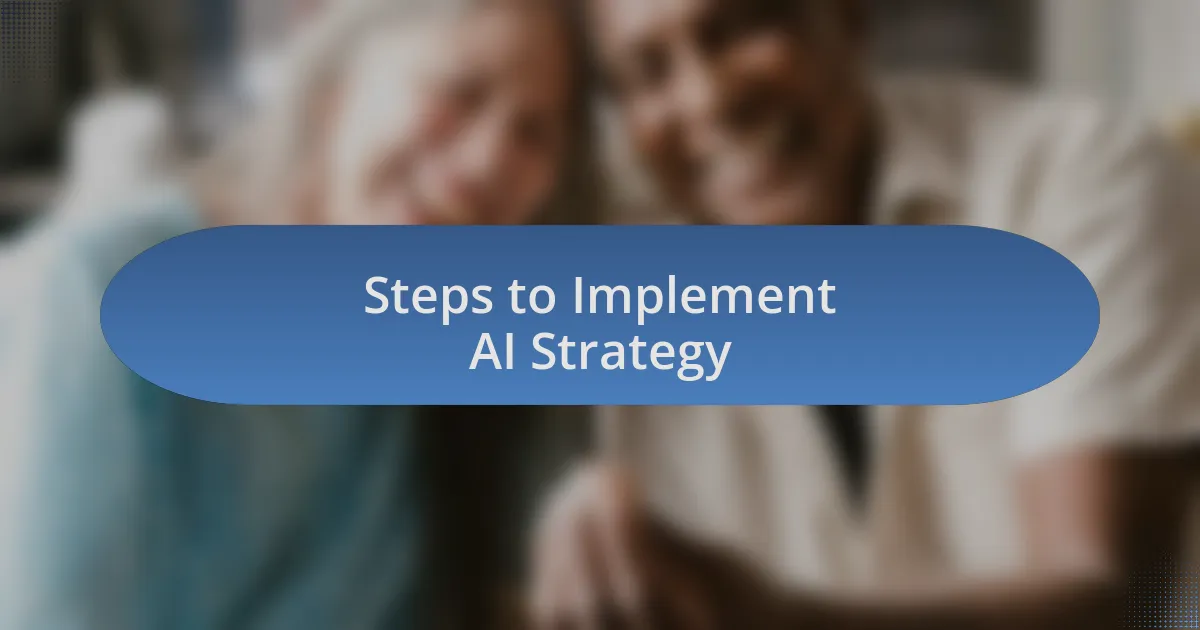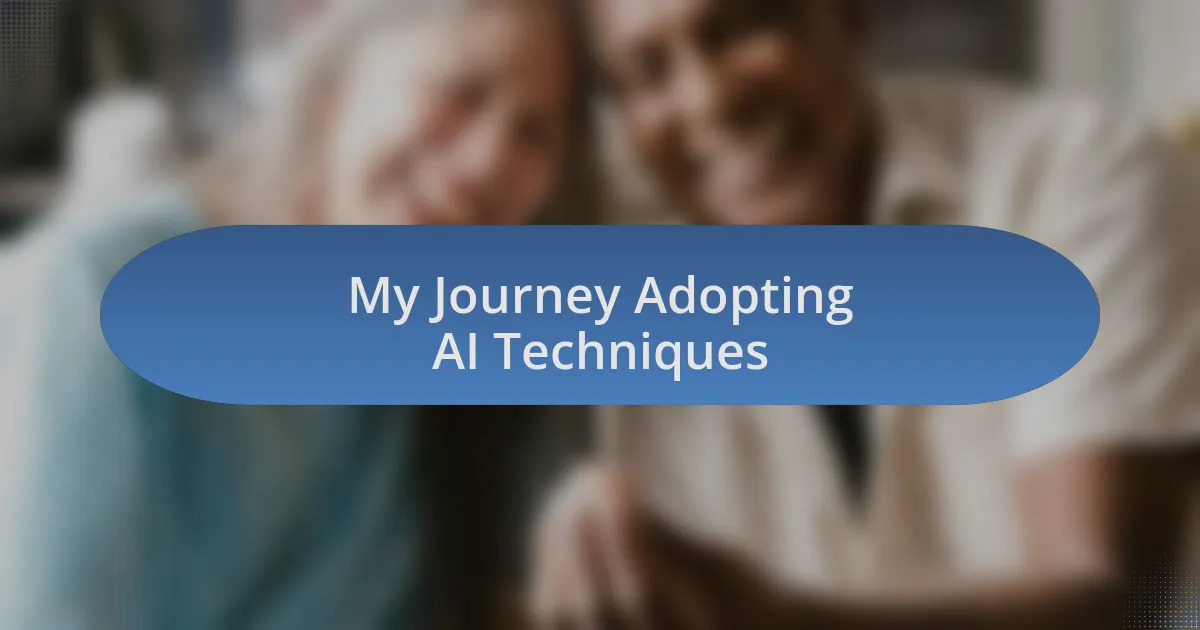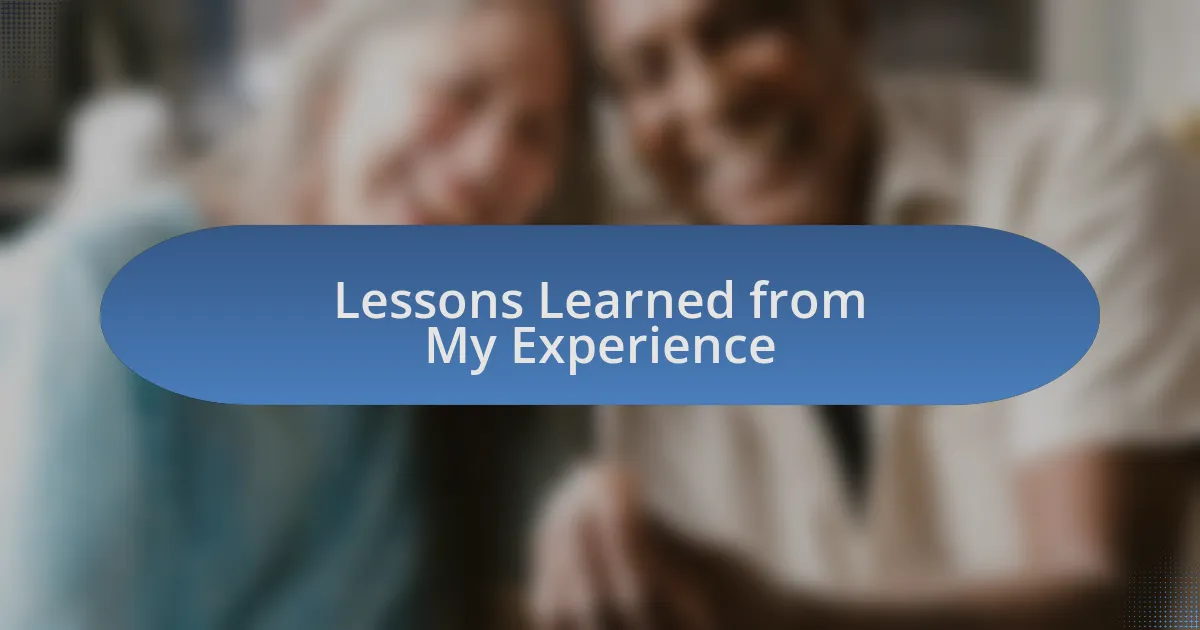Key takeaways:
- AI enables rapid data analysis, fostering data-driven decisions and innovation in product development.
- Implementing an AI strategy requires clear goal definition, selecting appropriate tools, and encouraging continuous learning.
- The journey of adopting AI reveals the importance of managing expectations and embracing flexibility during the development process.
- Cross-functional collaboration enhances AI insights, leading to more innovative solutions and stronger team connections.

Key Benefits of Using AI
One of the most striking benefits of using AI in product development is its ability to analyze vast amounts of data at lightning speed. I remember when I first integrated AI tools into our workflow; it felt like having an extra pair of hands that could sift through customer feedback in seconds, highlighting key trends that I might have missed otherwise. Can you imagine how transformative that can be for making data-driven decisions?
Another crucial advantage is the potential for innovation. With AI, the possibilities seem endless. I’ve witnessed teams brainstorm new product features based on predictive analytics, which opened doors to ideas we hadn’t even considered. Isn’t it exciting to think about what AI can generate that could lead to groundbreaking products in the cannabis industry?
Lastly, AI enhances efficiency by automating repetitive tasks. I personally experienced a significant reduction in time spent on mundane processes when we implemented automation in our product testing phase. I often ask myself, what more time could we dedicate to creativity and strategy if we let AI handle the repetitive stuff? The possibilities for growth and improvement are truly inspiring.

Steps to Implement AI Strategy
When implementing an AI strategy, the first step is to clearly define your goals. It’s essential to know what you want to achieve—whether it’s enhancing product features or optimizing the supply chain. I recall our team sitting down with a whiteboard, brainstorming outcomes we wanted from AI. This clarity helped align our efforts and made subsequent steps much smoother.
Next, selecting the right AI tools tailored to your needs is crucial. I remember being overwhelmed by the plethora of options out there, from machine learning algorithms to natural language processing tools. After thorough research and testing, we chose a platform that fit like a glove, allowing us to customize functionalities to our specific challenges. Have you ever faced a situation where the right tool made all the difference? It’s empowering to see how a thoughtfully chosen tool can streamline processes.
Finally, don’t underestimate the importance of continuous learning and adaptation. AI technology evolves rapidly, and staying updated can feel like a challenge. I’ve found that fostering a culture of learning within the team encourages everyone to embrace these changes enthusiastically. As we incorporate new insights, it’s fascinating to see how our strategies evolve and improve. Have you thought about how learning from failures could enhance your AI journey? It’s a reminder that every step taken is a valuable lesson toward success.

My Journey Adopting AI Techniques
My journey adopting AI techniques began with a curious sense of wonder about the possibilities it could unlock. I distinctly remember attending a workshop, listening to industry leaders share their experiences. This sparked an idea in me: what if we could revolutionize our product development through AI? It felt like standing on the edge of a new frontier, and I was determined to dive in.
As we started experimenting with AI algorithms, I encountered moments of both excitement and frustration. There were days when a predictive model would surprise us with its accuracy, making me feel as if we had tapped into some sort of magic. Yet there were also times when the models misfired, leading to a collective groan in the office. How does one balance the euphoria of innovation with the reality of setbacks? Through these ups and downs, I learned that resilience and patience were just as crucial as technical skills.
The most rewarding aspect of this journey has been witnessing the collaborative spirit it fostered within our team. Sharing ideas and troubleshooting challenges together created a sense of camaraderie that I hadn’t felt before. I often reflect on how this journey forced us to rethink our processes and trust each other more deeply. Isn’t it fascinating how technology can not only enhance productivity but also build stronger human connections? That realization has shaped my approach to AI in product development profoundly.

Lessons Learned from My Experience
One of the most profound lessons I learned was the importance of managing expectations. I recall a particularly ambitious project where we anticipated swift results from our AI model. Instead, weeks went by with minimal progress. That experience forced me to reassess my understanding of what AI could achieve. It taught me to celebrate small victories and appreciate the learning process, not just the end goal.
Another critical insight was the necessity of cross-functional collaboration. I remember a brainstorming session where team members from different departments came together to share their perspectives on product features. The AI insights we gathered were enriched tremendously by their input. It made me realize that the fusion of diverse creative minds leads to more innovative solutions. Have you ever found that the best ideas often come from unexpected places?
Furthermore, embracing flexibility became essential as our projects evolved. I vividly remember a scenario where we needed to pivot our strategy midway because of shifting market trends. Instead of feeling defeated, the adaptability we cultivated became our greatest strength. This taught me that the path to innovative product development isn’t just about sticking to a plan; it’s about being willing to change course when necessary. How can we create a culture that welcomes such adaptability?